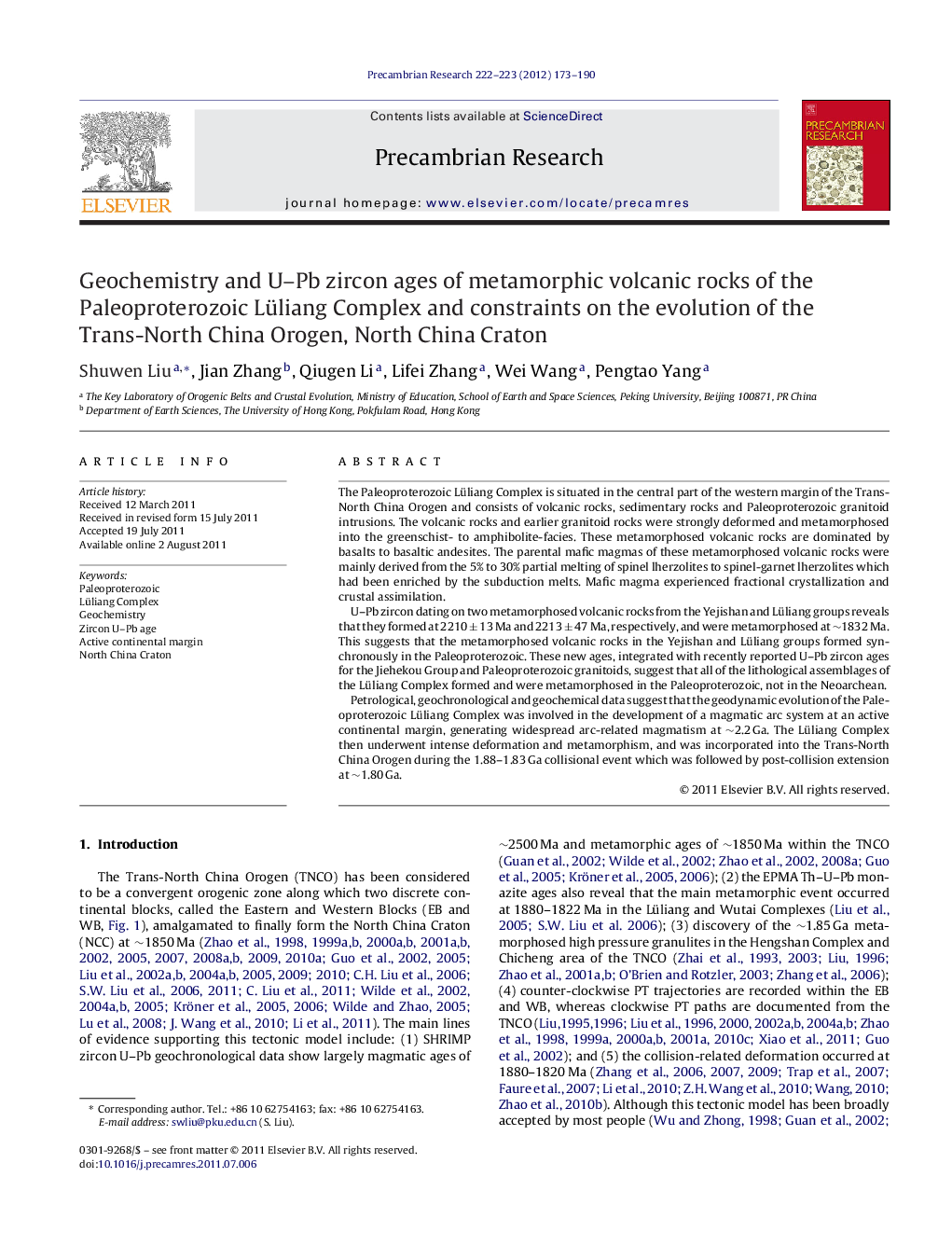| کد مقاله | کد نشریه | سال انتشار | مقاله انگلیسی | نسخه تمام متن |
|---|---|---|---|---|
| 4723448 | 1639651 | 2012 | 18 صفحه PDF | دانلود رایگان |

The Paleoproterozoic Lüliang Complex is situated in the central part of the western margin of the Trans-North China Orogen and consists of volcanic rocks, sedimentary rocks and Paleoproterozoic granitoid intrusions. The volcanic rocks and earlier granitoid rocks were strongly deformed and metamorphosed into the greenschist- to amphibolite-facies. These metamorphosed volcanic rocks are dominated by basalts to basaltic andesites. The parental mafic magmas of these metamorphosed volcanic rocks were mainly derived from the 5% to 30% partial melting of spinel lherzolites to spinel-garnet lherzolites which had been enriched by the subduction melts. Mafic magma experienced fractional crystallization and crustal assimilation.U–Pb zircon dating on two metamorphosed volcanic rocks from the Yejishan and Lüliang groups reveals that they formed at 2210 ± 13 Ma and 2213 ± 47 Ma, respectively, and were metamorphosed at ∼1832 Ma. This suggests that the metamorphosed volcanic rocks in the Yejishan and Lüliang groups formed synchronously in the Paleoproterozoic. These new ages, integrated with recently reported U–Pb zircon ages for the Jiehekou Group and Paleoproterozoic granitoids, suggest that all of the lithological assemblages of the Lüliang Complex formed and were metamorphosed in the Paleoproterozoic, not in the Neoarchean.Petrological, geochronological and geochemical data suggest that the geodynamic evolution of the Paleoproterozoic Lüliang Complex was involved in the development of a magmatic arc system at an active continental margin, generating widespread arc-related magmatism at ∼2.2 Ga. The Lüliang Complex then underwent intense deformation and metamorphism, and was incorporated into the Trans-North China Orogen during the 1.88–1.83 Ga collisional event which was followed by post-collision extension at ∼1.80 Ga.
Figure optionsDownload as PowerPoint slideHighlights
► There are a mass of metamorphic volcanic rocks in the Lüliang Complex, NCC.
► LA-ICP-MASS zircon U–Pb isotopic dating reveals they erupted at ∼2.2 Ga.
► Their parental magma came from the 5 to 30% melting of the mantle lherzolites.
► These metavolcanic rocks were developed under a continental marginal arc setting.
Journal: Precambrian Research - Volumes 222–223, December 2012, Pages 173–190